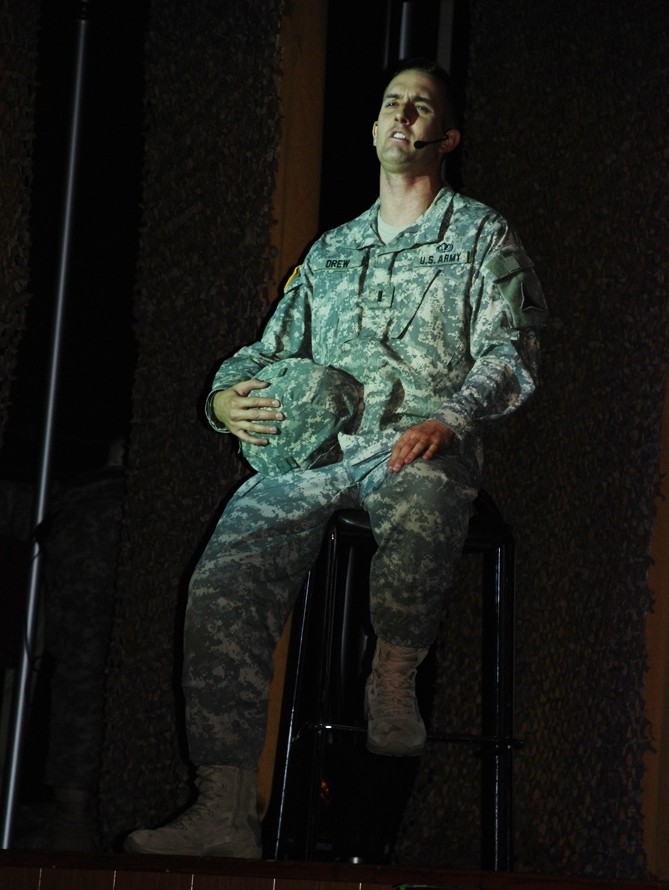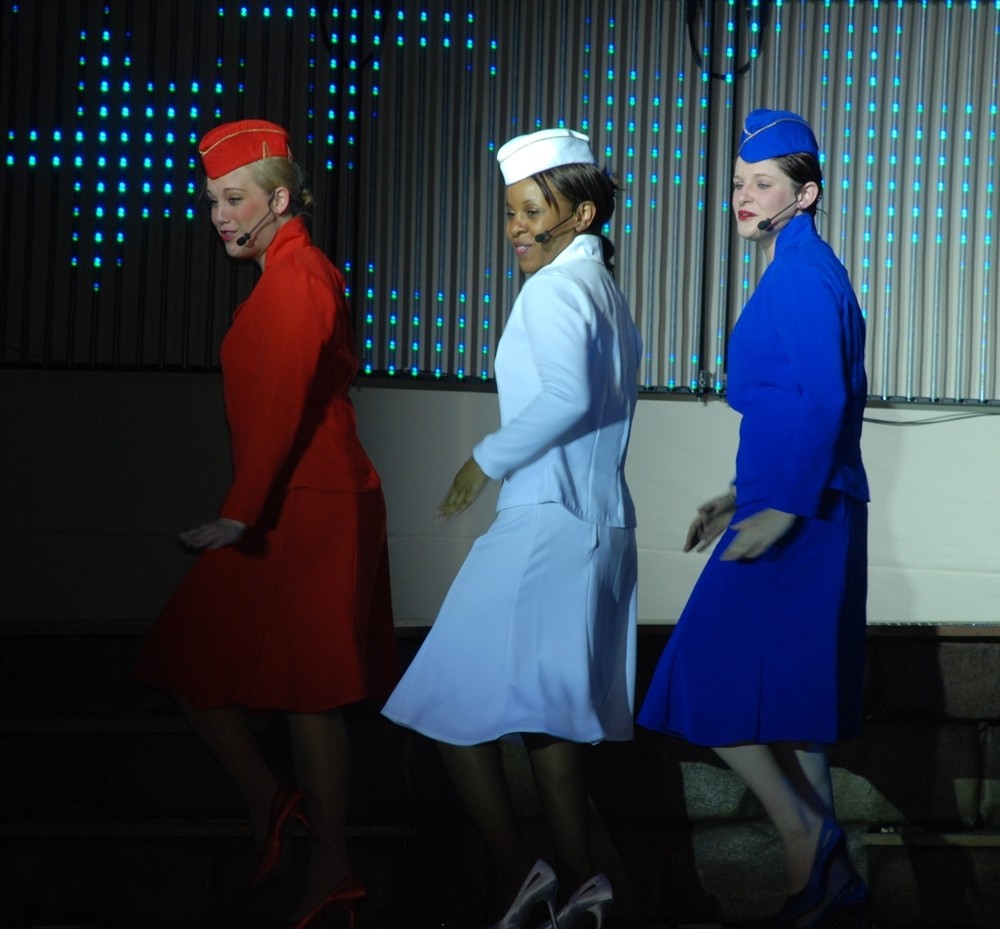CHIAfE+VRES, Belgium - Entertainers often flock downrange to entertain troops fighting the Global War on Terror. In mid-May, it was uniformed performers taking center stage at U.S. Army Garrison Benelux, bringing a piece of Baghdad or Kabul with them as the U.S. Army Soldier Show delivered two shows in the area.
Getting an opportunity to perform on a seven-month tour of entertaining Soldiers and military Families is fulfilling a lifelong dream for many of the show's members.
The tour kicked off as the Supreme Headquarters Allied Powers cinema was transformed into a desert faAfASade for the first performance May 15 on SHAPE. That performance was followed by a May 17 performance at Joint Force Command Brunssum, the Netherlands, to entertain U.S. forces serving across the USAG Schinnen footprint.
This year is the 25th anniversary of the modern-era U.S. Army Soldier Show and the 89th birthday of the first Army Soldier Show that debuted in 1918. The show has its roots imbedded in Irving Berlin's production of "Yip Yip Yaphank," which appeared on Broadway in 1918.
Almost nine decades later, the troupe's performance is again built from the conscious of America's warriors.
"The impression we want the audience to get is that they've been transported to ... a combat area," said Tim Higdon, show director. The stage floor bears a tan faAfASade with desert camouflage nets and faux sandbags to simulate a field environment in Iraq or Afghanistan.
A louvered-wall stage backdrop, featuring a desert sunset with signs bearing the names of camps and forward operating bases, provides a somewhat surreal ambiance, along with sounds typically heard in the field: rumbling trucks; helicopters taking off and buzzing overhead; off-duty Soldiers at play; cadence calling.
Such surroundings are "to drive home that they start the show as Soldiers and they leave the show the same way, as Soldiers - to do what their mission in life is," said Higdon, a 1988 show performer who this year replaced Victor Hurtado in the director's chair. "Since we're not taking the show to Baghdad, we're bringing Baghdad to the show."
In fact, nearly half of the cast and crew have participated in GWOT, so they understand deployment life.
It is not all song and dance for these troops who follow in the footsteps of the modern version of the show, which originated in 1983 as an outgrowth of several shows existing in various Army commands, with Soldier-talent selected from worldwide competition.
While traveling, the members work an average 14-hour day, seven days a week for seven months. Totally self-contained, the cast and crew offload, load, assemble and dismantle 18 tons of equipment at each stop on the tour, including four miles of cable and 100 theatrical lights. During the tour, they handle more than a million pounds of electrical, sound, stage and lighting gear.
During the show, video screens add to the onstage presence, bringing visual elements from years past as the cast celebrates the 25th anniversary with a World War II tune: "This is the Army, Mr. Jones," which was written in 1942 by Soldier Show founder Irving Berlin for "This is the Army." During that number, a video montage of photographs, posters and video clips spotlight a quarter century of Soldier Shows.
"We touch on the 25 years, but the show isn't (solely) focused on that," Higdon said. "The show is still relevant to today's Soldier and Family members in the communities. We have some fun with period pieces, as we always do, but there's no conscious effort to really drive home '25 years' throughout the show. It's really more about the Soldier and the environment they serve in today."




Social Sharing